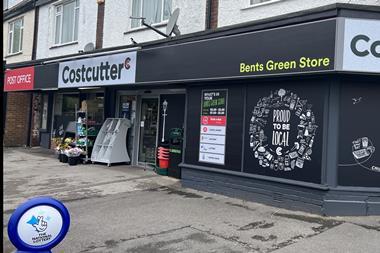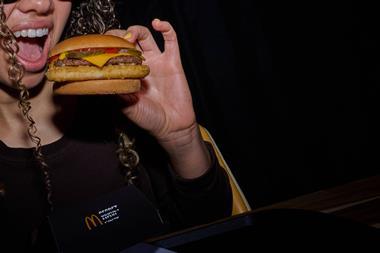Costcutter 2003 turns its focus on availability. John Wood reports
Helping independent retailers to keep their shelves stocked with the top selling lines is the kind of laudable ambition every symbol group should aspire to, but over the years it has proved impossible to put into action except for each group’s few elite retailers.
True, many symbol groups have provided their members with suggested lists of the top selling products in each category and some have even persuaded suppliers to come up with category planograms that included their competitors’ products, but the projects have always fallen down on implementation.
Even when a company rep has remerchandised a retailer’s shelves the results are usually transient. Every thing looks great for a few days, but once it comes to reordering and restocking it’s all too easy for independent retailers, and the staff filling the shelves, to slip back into the old ways. Within weeks they are back where they started.
Overcoming this problem is something Costcutter is determined to do, and at its conference at Vilamoura, Portugal, last week, it unveiled a coordinated range of initiatives tackling all areas of the problem.
Stage one of the solution is a £250,000 deal with software specialist Galleria which will enable members to generate store specific planograms tailored to their locality. Members will be able to request the planograms via the Costcutter website and should receive the results within 20 minutes.
Sales and development director David Thompson said the first category, beer and cider, would be available in November and the whole store would be covered by May of next year.
Backing up the planograms will be a new core ranging initiative which was unveiled by trading and marketing director Angela Barber. Costcutter has recruited field marketing agency Brian Coles Partnership (BCP) and consultant Keith Webb, a former director of Spar and T&S, as partners on the project, and it will be reps from BCP who, over a series of visits to stores, will physically help retailers implement the core ranging and the planograms.
Initially Costcutter will be drawing up core ranges for four categories: biscuits, crisps and snacks, chilled and beer, lager and cider. Over a six-month period the reps will pay one visit a month for each category, meaning retailers will receive a visit every week.
On the first visit for each category the rep will audit the stores for the required lines in the core range, and if any are missing they will be able to place a transfer order direct with Nisa-Today’s from a hand-held terminal. This will be repeated on the second and third visit and on the third visit the rep will ask the retailer whether they want to commit to the planogram.
After a check-up call to ensure the retailer has the stock required by the planogram, the rep will implement the planogram on the fourth visit. On the fifth and sixth visits the reps will audit the planograms and help retailers to ensure availability.
Barber said the scheme would benefit retailers by driving improved availability, sales and profits, and she added: “This is what suppliers have been asking for: category management and core range availability.”
She said Costcutter would be looking for support for the initative from suppliers and that each visit would cost £27.30. With three key suppliers per category the cost would come down to £9.10 per supplier, she added.
Barber said the project would be restricted to the four trial categories for a six-month period, but she would be talking to other suppliers about getting involved. She hoped 500-700 retailers would take part in the trial.
If the initiative means that implementation of core categories and planograms can be demonstrated outside the handful of elite symbol group retailers, she might find it’s one of the easiest selling jobs she’s ever had.
Helping independent retailers to keep their shelves stocked with the top selling lines is the kind of laudable ambition every symbol group should aspire to, but over the years it has proved impossible to put into action except for each group’s few elite retailers.
True, many symbol groups have provided their members with suggested lists of the top selling products in each category and some have even persuaded suppliers to come up with category planograms that included their competitors’ products, but the projects have always fallen down on implementation.
Even when a company rep has remerchandised a retailer’s shelves the results are usually transient. Every thing looks great for a few days, but once it comes to reordering and restocking it’s all too easy for independent retailers, and the staff filling the shelves, to slip back into the old ways. Within weeks they are back where they started.
Overcoming this problem is something Costcutter is determined to do, and at its conference at Vilamoura, Portugal, last week, it unveiled a coordinated range of initiatives tackling all areas of the problem.
Stage one of the solution is a £250,000 deal with software specialist Galleria which will enable members to generate store specific planograms tailored to their locality. Members will be able to request the planograms via the Costcutter website and should receive the results within 20 minutes.
Sales and development director David Thompson said the first category, beer and cider, would be available in November and the whole store would be covered by May of next year.
Backing up the planograms will be a new core ranging initiative which was unveiled by trading and marketing director Angela Barber. Costcutter has recruited field marketing agency Brian Coles Partnership (BCP) and consultant Keith Webb, a former director of Spar and T&S, as partners on the project, and it will be reps from BCP who, over a series of visits to stores, will physically help retailers implement the core ranging and the planograms.
Initially Costcutter will be drawing up core ranges for four categories: biscuits, crisps and snacks, chilled and beer, lager and cider. Over a six-month period the reps will pay one visit a month for each category, meaning retailers will receive a visit every week.
On the first visit for each category the rep will audit the stores for the required lines in the core range, and if any are missing they will be able to place a transfer order direct with Nisa-Today’s from a hand-held terminal. This will be repeated on the second and third visit and on the third visit the rep will ask the retailer whether they want to commit to the planogram.
After a check-up call to ensure the retailer has the stock required by the planogram, the rep will implement the planogram on the fourth visit. On the fifth and sixth visits the reps will audit the planograms and help retailers to ensure availability.
Barber said the scheme would benefit retailers by driving improved availability, sales and profits, and she added: “This is what suppliers have been asking for: category management and core range availability.”
She said Costcutter would be looking for support for the initative from suppliers and that each visit would cost £27.30. With three key suppliers per category the cost would come down to £9.10 per supplier, she added.
Barber said the project would be restricted to the four trial categories for a six-month period, but she would be talking to other suppliers about getting involved. She hoped 500-700 retailers would take part in the trial.
If the initiative means that implementation of core categories and planograms can be demonstrated outside the handful of elite symbol group retailers, she might find it’s one of the easiest selling jobs she’s ever had.


















No comments yet